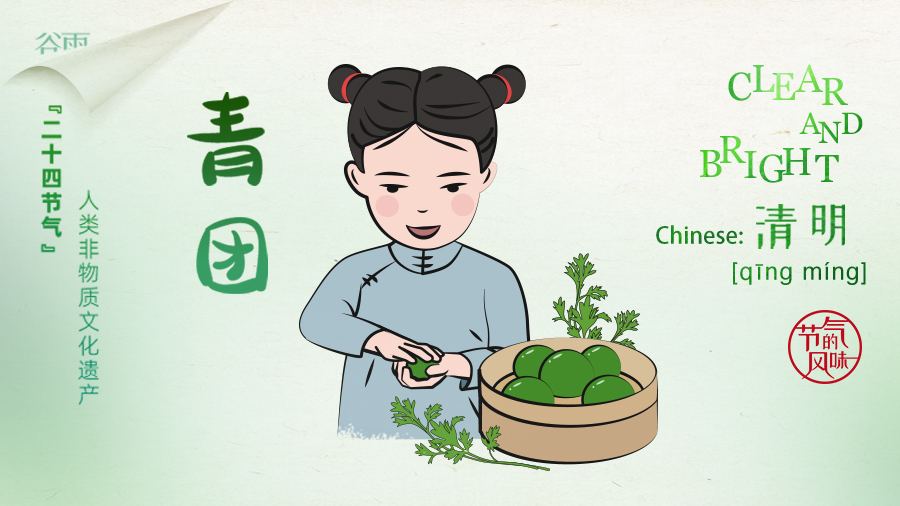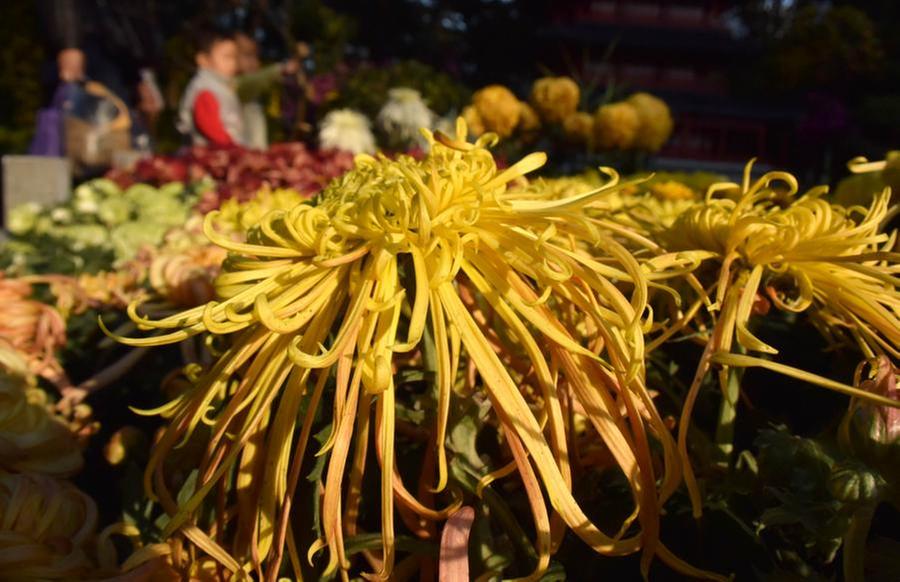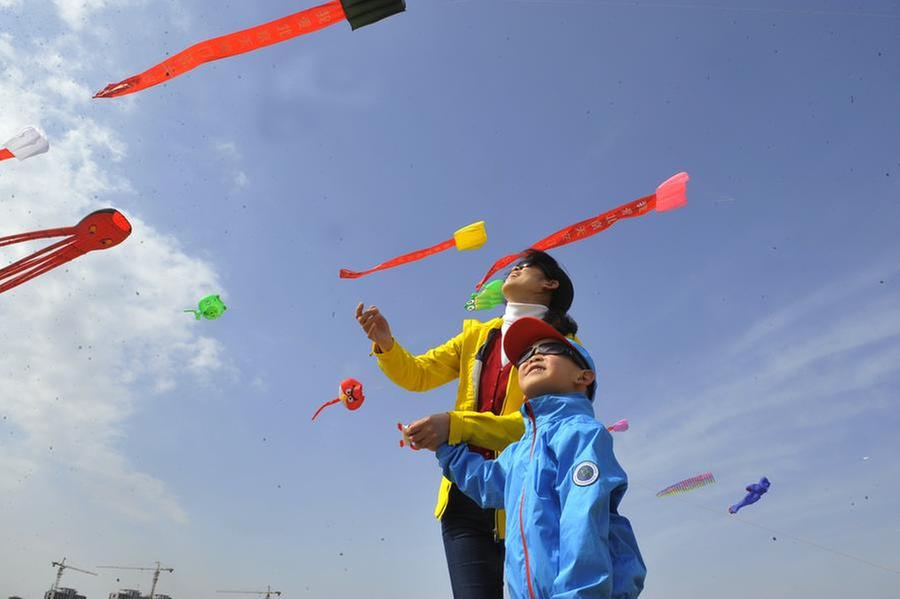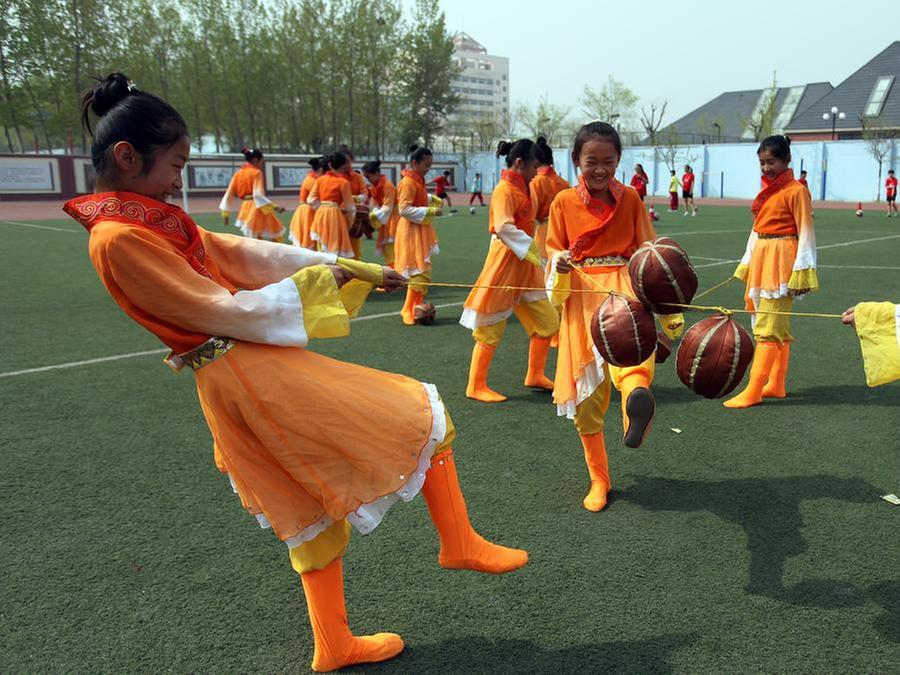Eight things you may not know about Clear and Bright

The traditional Chinese solar calendar divides the year into "24 solar terms". Clear and Bright (qing ming), the 5th solar term, lasts from Apr 4 to Apr 19 this year.
Of the "24 solar terms", Clear and Bright is the only one whose first day coincides with a traditional Chinese festival, Qingming Festival, also known as Tomb-Sweeping Day. The words "clear" and "bright" reflect the weather during this period, as temperatures rise and rainfall increases, making it a crucial time for spring plowing and sowing.
Here are eight things you may not know about Clear and Bright.
Worshiping ancestors
Clear and Bright is a time for honoring nature and remembering ancestors. This tradition can be traced back to ancient times and still holds significant meaning in modern society.
Cleaning the tombs and paying respect to the deceased with offerings are the two key practices during this period. Weeds around the tomb should be cleared away and fresh soil must be added to show care for the dead.
The deceased's favorite food, wine, and chopsticks are placed on their tombs, along with paper money, which is burned in the hope that the deceased will have enough money in the afterlife.

Willow branches
Legend has it that Clear and Bright is one of three times in a year when ghosts come closest to the living world. Buddhists believe that willow branches can drive away evil spirits. Therefore, willow branches are also known as "ghost terror wood".
Folk proverbs also dictate customs. One proverb states that if a young lady does not wear a willow branch during the Clear and Bright period, she will soon turn old. Another says, "If one does not wear a willow, they will be reincarnated as a yellow dog after death."
Spring outings
Clear and Bright is not only a time for honoring the deceased but also an opportunity to embrace the beauty of nature
As trees turn green, flowers blossom, and the sun shines brightly, everything returns to life. It is a perfect time to appreciate the beauty of nature. This custom can be traced back to the Spring and Autumn (770-476BC) and Warring States (475-221BC) periods.
Taking leisurely strolls in spring brings joy and enhances a healthy body and mind.
Flying kites
Flying kites is a popular activity among Chinese people on Tomb-Sweeping Day. People fly kites not only during the day but also at night, attaching small lanterns to the kites or their strings. And when the kites are flying, the lanterns look like twinkling stars at night. What makes flying kites on this day special is that people cut the string while the kite is in the sky to let it fly free. It is believed that this brings good luck and wards off illness.

Cold Food Festival
Cold Food Festival, or Hanshi Festival, is a traditional Chinese holiday observed one day before Tomb-Sweeping Day. On that day, making fire is taboo, and only cold food is consumed. Legend has it that during the Spring and Autumn period, Prince Chong'er of the state of Jin endured many hardships while exiled from his home state. Once, in order to save the starving prince, a follower named Jie Zhitui cut a piece of flesh from his own thigh and offered it to him.
When Chong'er became Duke Wen of Jin, however, he did not reward Jie; instead, Jie and his mother tragically died in a fire set on the duke's orders. Later, Duke Wen, filled with remorse, ordered that using fire on the anniversary of Jie’s death was forbidden and all food had to be consumed cold.
'Cu ju'
Cu ju is a unique game played during this period. The "ju" is a ball made of leather with hair plugged in it. Legend has it that the Yellow Emperor first invented it for training warriors. Later, cu ju was used by people to build up their bodies when they were unable to eat hot food during Cold Food Festival.

Eating eggs
In many parts of China, eating eggs on Tomb-Sweeping Day is as important as eating moon cakes during Mid-Autumn Festival. The Chinese folk belief is that eating an egg on Tomb-Sweeping Day will bring good health all year. In China, this custom has lasted for thousands of years.
The tradition of eating eggs dates to "Shangsi Jie", a traditional Chinese festival. In ancient times, married women who wished to have babies often dyed boiled eggs with different colors and placed them in a river, and people living downstream would then picked the eggs up and ate them. It was said that the more eggs were eaten, the higher the woman's chance of getting pregnant. Today, people believe that eating eggs on Tomb-Sweeping Day will bring success.
Feasting on 'qing tuan'
In the lower reaches of the Yangtze River region, qing tuan is a very popular snack on Tomb-Sweeping Day. These round green glutinous rice balls are made by mashing barnyard grass to extract its juice, which is then mixed with flour to form a paste. The black bean filling is then added to the paste before it is steamed. Pretty and delicate, qing tuan have a mellow and unique flavor. They are also offered as sacrifices to ancestors on Tomb-Sweeping Day.
Vocabulary:
清明节
qīng míng jié
Qingming Festival, or Tomb-Sweeping Day
寒食节
hán shí jié
Cold Food Festival
扫墓
sǎo mù
tomb-sweeping
鬼魂
guǐ hún
ghost
春天
chūn tiān
spring
自然
zì rán
nature
风筝
fēng zhēng
kite
清明节是中国四大传统节日之一。
qīng míng jié shì zhōng guó sì dà chuán tǒng jié rì zhī yī.
Qingming Festival is one of the four major traditional festivals in China.
扫墓祭祖和踏青郊游是清明节的主要活动。
sǎo mù jì zǔ hé tà qīng jiāo yóu shì qīng míng jié de zhǔ yào huó dòng.
Tomb-sweeping and spring outings are the main activities of Qingming Festival.

